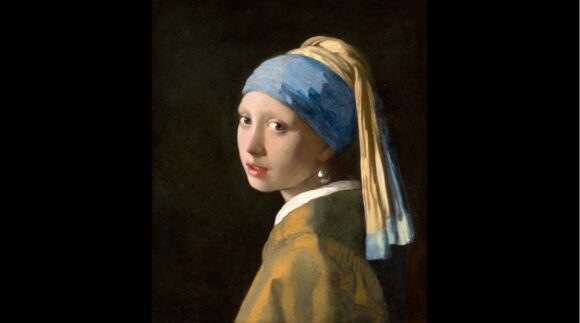
Everybody loves Vermeer. He’s irresistible. The magical light, the air of perfection, the whispery moods, the intoxicating combinations of yellow and blue. They get to all of us.
So it is entirely unsurprising that the Vermeer extravaganza at the Rijksmuseum — it’s the largest collection of his paintings assembled in history, featuring 28 of his 37 known works — is so relentlessly pleasing. Desperate punters will be arm wrestling their grandmothers in the streets of Amsterdam for tickets to this fabulous event.
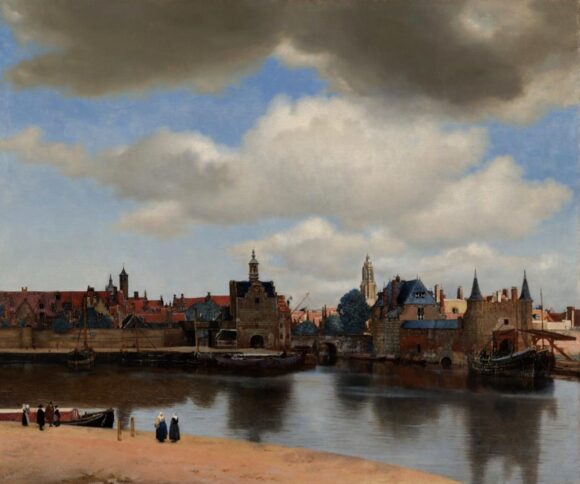
What is a surprise — a big one — is how revolutionary the show is. Yes, it’s Vermeer’s greatest hits, with nearly all the examples that survive of him at his best, but it is also a profound revision. We imagined we knew him so well. It turns out we didn’t.
The most immediate revelation is how varied he was, how restless. When we think of Vermeer we think of pensive young women standing by windows, reading a letter or tinkling away at a virginal, while the soft and silvery light of the Netherlands seeps into the room. It’s the classic Vermeer arrangement and the show has superb examples.
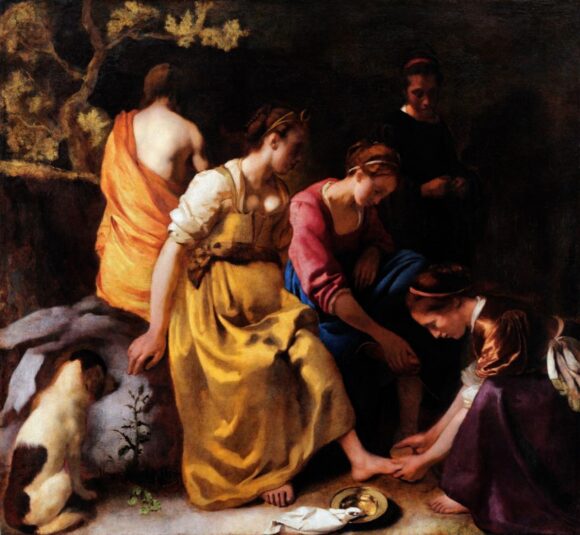
Here, though, we start with two views of Delft, his home town. One is a big picture from across the water, a long, low topography that feels as if it has ambitions to sum up the city: this is Delft — its shape, its character, its light. The other is an intimate look down an alley, with a peep into a house at some women working. We’re so close we can hear the rustle of their skirts. Two views of 17th-century Delft. One telescopic, one microscopic. Having completed them, Vermeer never paints another townscape.
The next room is more varied still. It features four student pieces done in his twenties in which he tries out four different modes. For a religious picture, he paints Christ in the House of Martha and Mary. For a mythological picture, he tries Diana and Her Nymphs. For a Dutch morality picture, he gives us The Procuress, a brothel scene involving one woman and three predatory males. As if that were not difference enough, he completes these early experiments with a striking copy of an Italian mannerist altarpiece showing the martyr St Praxedis collecting Christian blood in the streets of Rome. (It’s signed, and the Rijksmuseum is backing it, but it’s so flagrantly exceptional I suspect his tiny oeuvre may need to be whittled down from 37 to 36 known works.)
This sense of Vermeer constantly changing continues through the show. It slows down when he finds his métier, the girls by the windows, but never disappears. By the end of the journey he’s painting complex allegories of Catholicism, with a cast of symbols busier than a page of emojis, and even a picture as familiar as the gorgeous Girl with a Pearl Earring — utterly realistic, yet simultaneously angelic to the point of divinity — is presented here as an experiment. He’s painting a character head, what the Dutch call a tronie. And having reached the summit of tronie painting, he moves on. “Been there, done that” is a Vermeer trait.
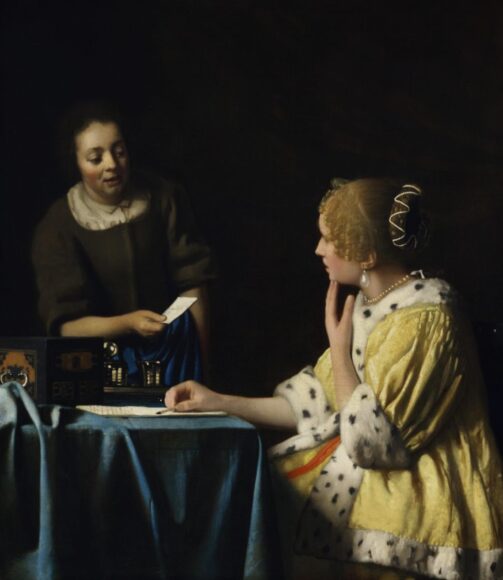
While his restlessness is the show’s first revelation, the second is the single-mindedness of his search for perfection. In the build-up to this display, the Rijksmuseum mounted deep technical examinations of his pictures. They reveal a relentless quest for improvement. The Rijksmuseum’s own masterpiece, The Milkmaid, arrived at its quiet, thoughtful, telling simplicity after a busy campaign of fiddling. First he removed the jug rack from behind the milkmaid’s head to make her stand out. Then he removed a small stove near her feet to give her more white wall as a background. He’s like a sculptor removing excess marble in the search for the perfect form.
But the really telling correction of our image of him that takes place here is the exhibition-long presentation of him as a deeply religious artist. Not just any religion, either, but an especially ecstatic Catholicism.
He was born into a Dutch Protestant family, but his wife was Catholic, fiercely so. She bore him 15 children, some of whom are surely the girls in his art, observed with such evident and paternal tenderness. While there is no surviving documentary proof that he officially converted, there is plenty that is circumstantial and, of course, the evidence in his pictures.
The show’s catalogue focuses especially on the influence of the Jesuits who lived next door to the Vermeers in Delft. These Delft Jesuits were interested in advanced optics because they believed they offered scientific proof of divine intervention. It is now widely accepted that Vermeer, too, used optical instruments to achieve his sense of perfection. If so, it would have been under the influence of the adventurous Jesuits.
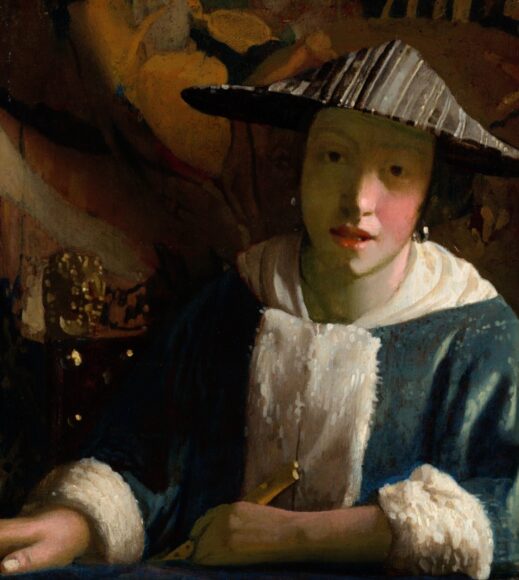
What’s certain is that his art begins to fill up with religious symbols, climaxing in the unusually awkward and busy message of the event’s final picture: Allegory of the Catholic Faith. It features another woman in a room, but this time her space is cluttered with big Catholic signage — a half-eaten apple, a murdered snake. Vermeer, you feel, is painting under strict Catholic orders.
It’s all a bit clunky. But it makes you understand what came before differently. Back in the gripping sections of the show where thoughtful women stand by windows, you begin to see the light streaming through the glass in new ways. It assumes a religious air, as if we are looking at half of an Annunciation. The angel isn’t there, but the Virgin is, and so is the divine light through which God sends her his messages.
Most often it’s an inflection rather than a description: we could be imagining it. But in pictures such as Woman Holding a Balance, on loan from Washington, in which the woman holds up a set of scales while the Last Judgment is depicted in the painting on the wall behind her; or Woman with a Pearl Necklace, on loan from Berlin, in which the girl holds out her glowing pearls to the mysterious light flooding the room, it is unmistakeable.
Paradigm-shifting, brilliantly presented, cleverly designed, revelatory, intoxicating — this is one of the great art experiences of my lifetime. And yours.
Vermeer is at the Rijksmuseum, Amsterdam, until Jun 4. Vermeer: The Greatest Exhibition is in cinemas from Apr 18
